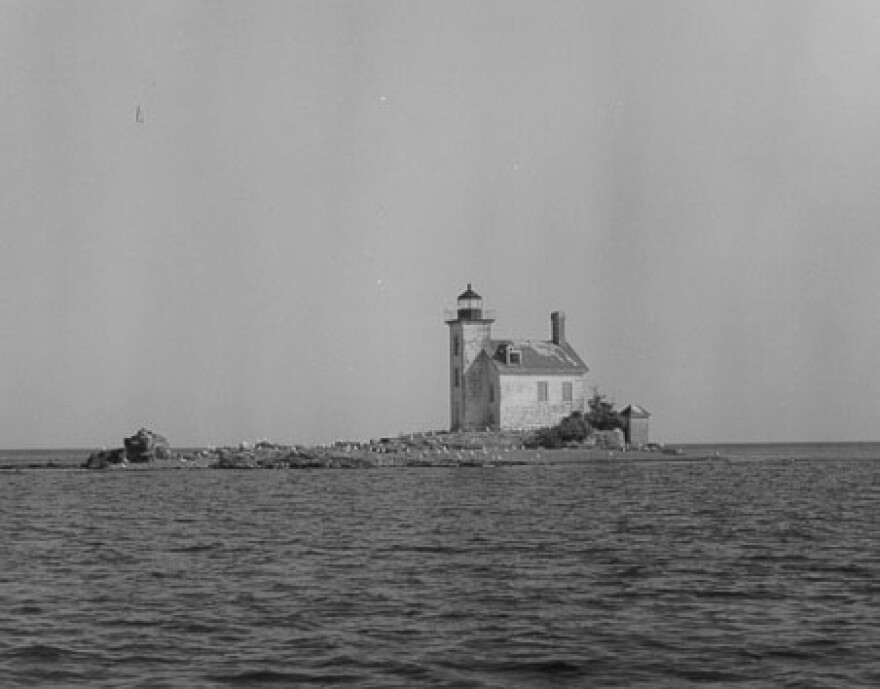Most of Michigan’s lighthouses are currently unoccupied, but in the 19th century, they had to be staffed. The jobs of lighthouse keepers traditionally went to men, but women sometimes worked alongside them.
The Gull Rock Lighthouse sits on a small, remote island just off the tip of Michigan's Keweenaw Peninsula in Lake Superior. The lighthouse’s log books offer a glimpse of that history. Between 1872 to 1903, a series of three women lived and worked there.
Jeremiah Mason is the president of the Gull Rock Lightkeepers. He’s also an archivist for the National Park Service. Mason has a special connection to the lighthouse, and spoke about it in a recent article for Michigan History Magazine.
By 1877, there were 143 lighthouses across the Great Lakes. Mason says it was relatively uncommon to have women working as lighthouse keepers in the 19th century. Most of the time they worked as assistant keepers at remote stations when their husbands were assigned as the main lighthouse keeper.
The women lighthouse keepers of Gull Rock
Mary Cocking's husband was assigned as head keeper at Gull Rock in 1868. Mason says he had a hard time keeping assistants on the job.
"It's a half acre rock in the middle of Lake Superior, and there is only the one real full size building on the island is the lighthouse itself. So the assistant had to live with the keeper and his family," Mason says.
Because assistant keepers kept leaving, Cocking requested that his wife Mary be appointed to the position, and she was in 1872.
"They were both there anyway and she certainly wasn't going to take off like the other fellows did," he says.
In 1888, Alice Nolan was appointed assistant keeper when her husband was the head keeper at Gull Rock. She worked there until 1903.
A special connection
Mason's great-great grandmother, Mary Corgan, was stationed at Gull Rock as an assistant keeper from 1877 to 1883. Her husband and principal keeper, James Corgan, kept extensive log notes at Gull Rock.
Below you can read his first few entries at the lighthouse.

"I was stunned the first time I read that because the tool rack that he mentions building in August of 1877 is still on the wall in the basement at the lighthouse. So I thought that was pretty cool," Mason says.
Maintaining the lighthouse
Mason says sometimes when the Corgans arrived at the start of the season in April, they would find that the entire lighthouse would be completely encased in ice.
"Sometimes they had to chop their way through the ice to get at the front door just to be able to get into the building," he says. "Gull Rock is only 12 feet above the level of the lake at its highest point, and sometimes the waves on Lake Superior are more than 20 feet in some storms."

An automatic light was eventually installed on the lighthouse in 1913, so there wasn't a need anymore for a lighthouse keeper and the island was essentially abandoned for 90 years. Mason is now working on restoring the lighthouse.
He says it was a pretty inspiring experience to visit it knowing his family had lived and worked there over a century ago.
"Gull Rock is a very special place and you really get a feel for that," he says. "I think even without the family connection, anytime anyone visits, they're struck by what a remarkable place it is. It's such a small rock and it's this tremendous, cool old lighthouse building on this tiny rock in the middle of Lake Superior.
"When my great-grandfather was born, actually, they lived at rock. And so just walking into the building for the first time was was a pretty remarkable experience."
Editor's note: Quotes in this article have been edited for length and clarity. You can listen to the full conversation near the top of this page.
Copyright 2022 Michigan Radio. To see more, visit Michigan Radio. 9(MDEyMzg0OTk0MDEzODE1MjM2ODE2ODgyMg004))

